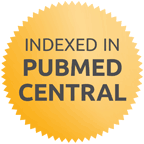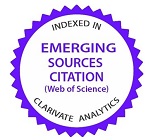Abstract
Aim. Placenta accreta (PA) is a condition where the placenta is pathologically adherent to the uterus due to a defect in the basal decidua with myometrium invasion by chorionic villi and is classified based on the depth of myometrial invasion by histology. However, ultrasound and magnetic resonance imaging have excellent accuracy. In this study, we investigated clinical benefits of early instrumental diagnosis of PA, especially in reducing maternal-fetal complications and improving perinatal outcomes. We also evaluated diagnostic accuracy of ultrasound and magnetic resonance imaging on placental invasiveness assessment.
Methods. In this review and observational retrospective study, risk factors of PA were collected, and pregnant women underwent third-trimester ultrasound and magnetic resonance imaging (MRI) to evaluate the degree of infiltration. Imaging results compared to histological findings and surgical evaluation.
Results. A total of 38 patients were diagnosed with at the University Hospital “San Giovanni di Dio and Ruggi d’Aragona”, Salerno, Italy, by second-trimester ultrasound with high sensitivity (100%) and accuracy (86%). Moreover, 37 of them performed MRI and 60.5% were diagnosed with Accreta, 7.9% increta, 10.5% percreta, and 21.1% not accrue with high sensitivity (100%), specificity (88.9%), and accuracy (97.4%). Histological assay confirmed MRI findings in 96.7% of cases. Risk factors of PA were age >35 years and previous CT scans. In unborn babies, mean 1-min Apgar was 4.3 (range, 3-6), and mean 5-min Apgar was 7.13 (range, 7-9).
Conclusion. MRI could be a not-invasive, specific, sensitive, and accurate diagnostic tool for assessing the degree of infiltration in PA, and could guide clinical decisions, such as delivery plan, thus reducing perioperative and fetal complications.
Recommended Citation
Castaldi, Maria Antonietta; Torelli, Alessandro Piroli; Scala, Pasqualina; Castaldi, Salvatore Giovanni; Mollo, Antonio; Perniola, Giorgia; and Polichetti, Mario
(2024)
"Instrumental diagnosis of placenta accreta and obstetric and perinatal outcomes: literature review and observational study,"
Translational Medicine @ UniSa: Vol. 26
:
Iss.
2
, Article 2.
Available at:
https://doi.org/10.37825/2239-9747.1060
Creative Commons License

This work is licensed under a Creative Commons Attribution-Noncommercial-No Derivative Works 4.0 License.
Included in
Health Communication Commons, Life Sciences Commons, Medicine and Health Sciences Commons




